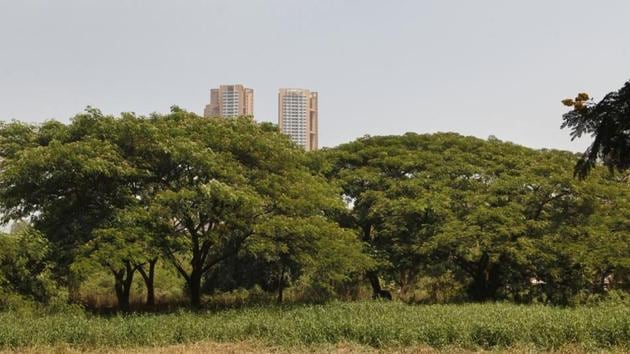Construction is eating into the protective buffer around Mumbai’s forests
The ban on construction in a 1-km radius, had been removed in the final ESZ notification
In December 2016, the Central environment ministry announced the creation of an eco-sensitive zone (ESZ) around Sanjay Gandhi National Park (SGNP) in Mumbai and Thane districts.

The ESZ, which is a protective buffer between the park and the city, varies in radius between 100 metres to four kilometres from the park’s boundaries. The area enclosed in the ESZ is 59.4 sq km – almost 60% as large as the 104 sq km national park itself.
While most of the ESZ is built-up, with residential buildings, slums, and roads, around 19.25 sq km of it is still forest, some of it privately owned. The ESZ also includes parts of Aarey Milk Colony, which environmentalists have stressed is a natural area that needs protection from construction. Aarey is also a backyard for wild animals, including leopards. The environment ministry’s notification prohibited mining and other industrial activities in the area while existing constructions were to be regulated.
Environment groups, which had been campaigning for the creation of a buffer around the national park should have been happy with the notification, but they were shocked at the final draft. The ban on construction in a 1-km radius, proposed in an earlier draft, had been removed in the final notification, effectively opening up the ESZ for more buildings and roads. Groups like the Aarey Conservation Group, which filed a case in the National Green Tribunal to protect Aarey, had submitted its objections to the draft ESZ but were not called for a hearing.
“After saying the notified area is an eco-sensitive zone, the notification goes on to add that there are no restrictions on anything. If you read the notification you will realise that practically anything will be allowed in the area,” a member of the group had told this newspaper.
The fears voiced by environmentalists seem to be coming true.
Last week, this newspaper reported that a company, owned by a member of Legislative Assembly had cut what was once a forest-covered hill in the proposed zone. The company agreed that it had cut through the hill to lay a road but said that had permission to do it as the land was privately owned.
So what gives the companies licence to ignore the ESZ notification? Godfrey Pimenta, a lawyer from citizens’ group Watchdog Foundation said that development plans (DP) for the area around SGNP has not incorporated the ESZ notification. Till the DP lays down land-use rules for ESZ, the area will be vulnerable to construction.
“In the last two years, nothing has been done. Meanwhile, permissions are being given for all kinds of construction activities in the area,” said Pimenta whose group had filed objections to the draft. “I did file a personal letter to the secretary of the ministry of environment, forests and climate change, but did not get a call for an interview.”
Pimenta recently complained to the forest department that the delay in incorporating the 2016 notification rules in the DP is destroying forest areas in the ESZ. The next DP for Mumbai is scheduled to be made in 2034. Environmental groups are worried that if the government waits to incorporate the notification in the next DP, no forests will be left in the ESZ.
Also, there is little clarity on what should be the extent of an ESZ. In December 2018, a three-member bench of the Supreme Court said that in case of national parks and wildlife sanctuaries which are yet to create buffer areas, an area of 10kms around these forests should be declared as ESZ.
However, the ministry of environment, forest, and climate change has not applied a blanket rule and in the case of SGNP, the buffer zone is as narrow as a few hundred metres in some places.
India has 662 wildlife sanctuaries and national parks. Of these, there are proposals to notify ESZs around 641 of them. As of November 29, 2018, ESZ notifications have been decided for 289, while draft notifications have been made for 206.

Stay updated with all the Breaking News and Latest News from Mumbai. Click here for comprehensive coverage of top Cities including Bengaluru, Delhi, Hyderabad, and more across India along with Stay informed on the latest happenings in World News.
Stay updated with all the Breaking News and Latest News from Mumbai. Click here for comprehensive coverage of top Cities including Bengaluru, Delhi, Hyderabad, and more across India along with Stay informed on the latest happenings in World News.





